Explore Egypt’s History: 5 Wonders at Karnak Temple
Karnak Temple, Located on the Nile River banks in Egypt, Karnak Temple is a majestic testament to the grandeur and sophistication of ancient Egyptian civilization. Throughout its history, this monumental site has borne witness to the reigns of numerous pharaohs, each leaving a lasting imprint on its landscape. The temple’s sheer size, intricate architecture, and rich historical significance make it a unique marvel in the ancient world.
Karnak Temple was recognized as a UNESCO World Heritage Site in 1979. This designation signifies that this ancient Egyptian site possesses exceptional cultural and historical significance. UNESCO aims to ensure the preservation and celebration of it for future generations, ensuring that its unique qualities remain accessible to people worldwide.
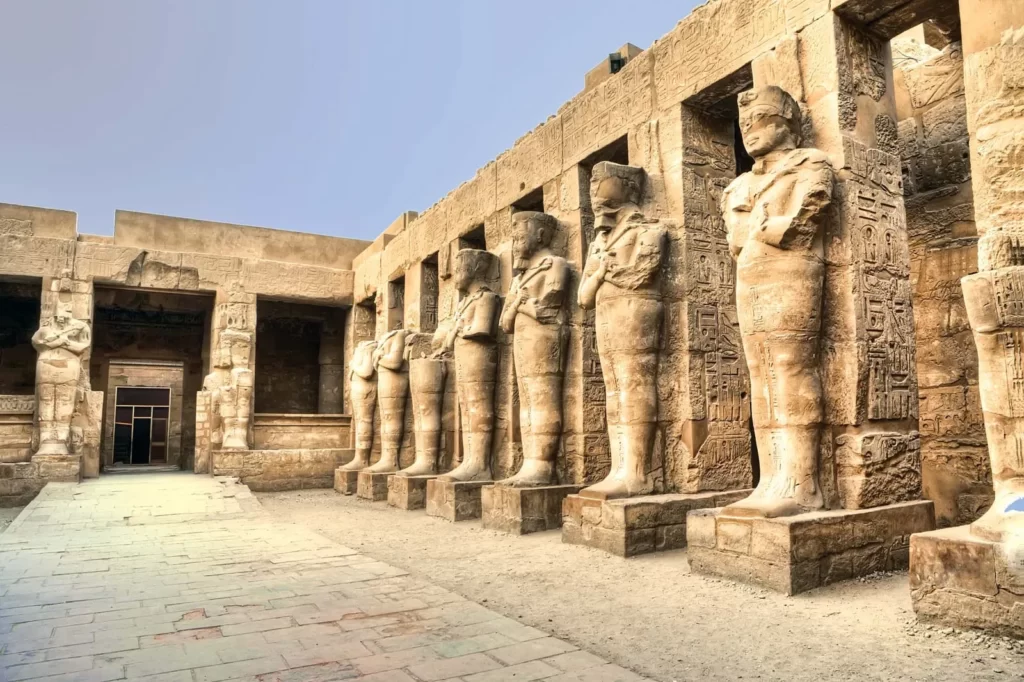
The Karnak Temple Complex: A Historical Tapestry
The Karnak Temple Complex, once the largest religious site in the ancient world, is a sprawling collection of temples, chapels, towers, and other structures. While many of these buildings are now in ruins, their remnants offer a glimpse into the vibrant and complex society of ancient Egypt. The complex served as a place of worship, a center of political power, and a symbol of the pharaoh’s divine authority.
The Great Temple of Amun: A Sacred Sanctuary
At the heart of the Karnak Temple Complex lies the Great Temple of Amun, a magnificent structure dedicated to the supreme god of the Egyptian pantheon. This temple is a testament to the ancient Egyptians’ deep religious beliefs and their ability to create awe-inspiring works of architecture. The temple’s towering pylons, ornate hypostyle hall, and sacred lake are just a few of its many remarkable features.
When you walk around Karnak today, you can see the broken bits of these old structures and imagine how they looked when they were new. The Great Temple of Amun, Temple of Hatshepsut, and Ramses II’s creation is like the superstars of Karnak, showing us the grand ideas and beliefs of the ancient Egyptians. It’s like taking a trip back in time and discovering the cool things that happened so many years ago.
A Glimpse into History: Ipet-it and Thebes
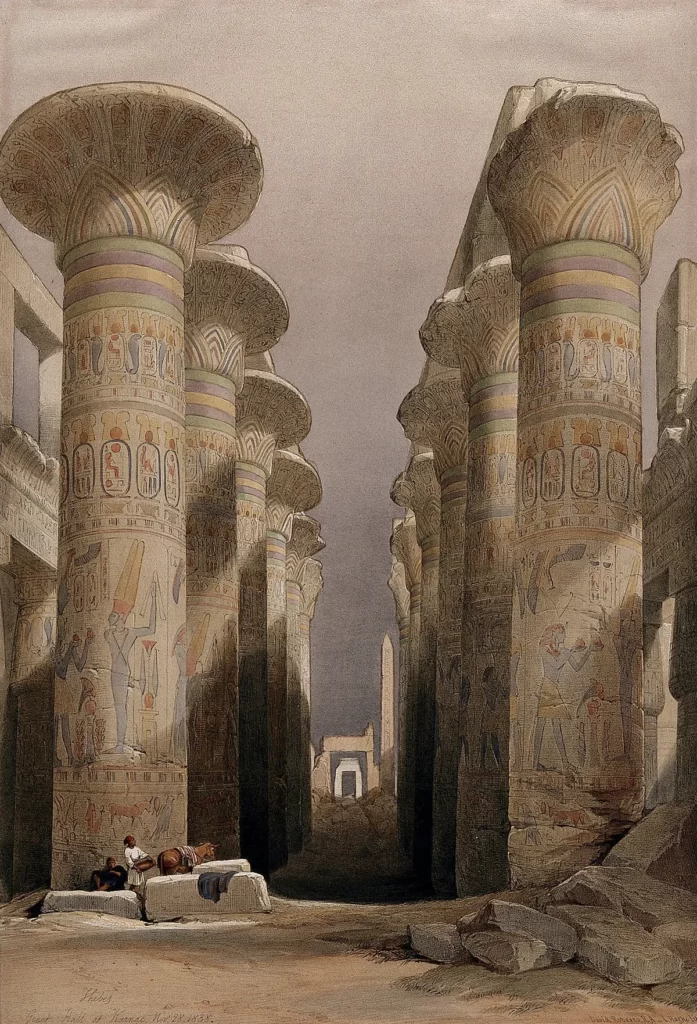
Karnak Temple was once the center of worship in the eighteenth dynasty of ancient Egypt. It was located within the city of Thebes, a major urban center and the capital of Upper Egypt. Thebes was a place of great religious and political significance, and the Karnak Temple served as its spiritual heart.
Precinct of Amun-Re: A Colossal Sanctuary
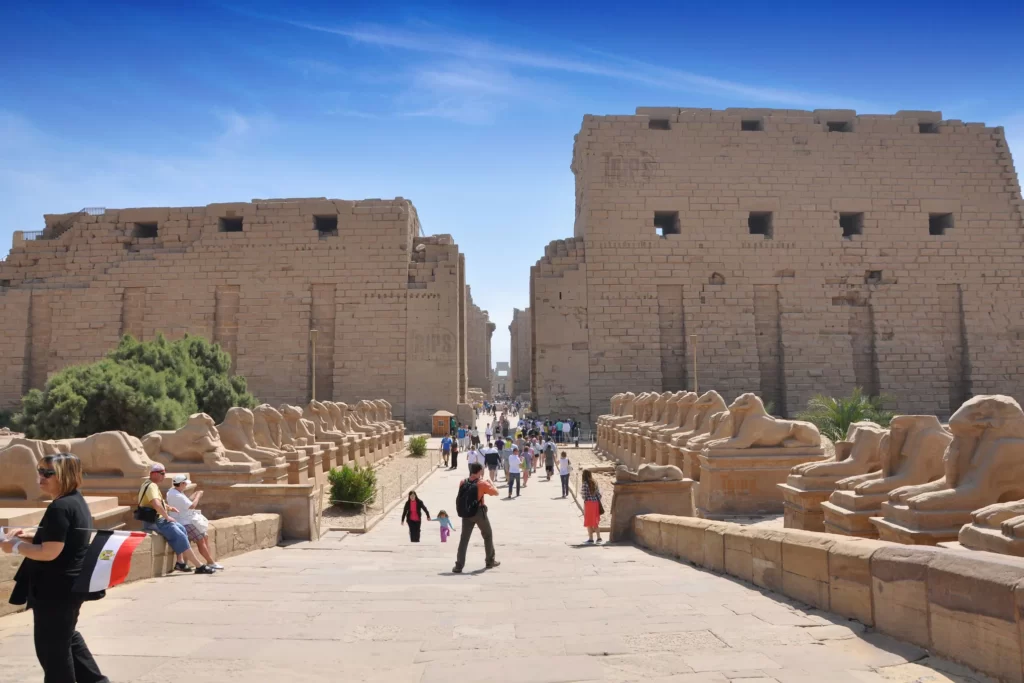
Within the Karnak Temple Complex lies the Precinct of Amun-Re, a sacred enclosure dedicated to the worship of the supreme god Amun. This area is home to several impressive structures, including the colossal statue of Pinedjem I, which stands over 10 meters tall. The stones and columns used to build the precinct were transported from Gebel Silsila, a region located hundreds of kilometers to the south.
The Temple of Ptah & Sekhmet Egyptian Goddess
The Temple of Ptah can be found in the sprawling Great Courtyard of Amun within the Karnak Temple complex in Luxor. This sacred site is devoted to the revered ancient Egyptian deity Ptah , alongside the war goddess Sekhmet and their offspring Nefertum. Constructed during the Middle Kingdom, the temple underwent reconstruction in the New Kingdom era under the rule of Thutmose III. The temple consists of six small gates built close together. The first gate in the west was built by the Ptolemies, the second gate is an exact copy of the first gate but is much more closed, the third gate incorporates two integral pillars connected to the fourth gate, the fifth gate serves as an entrance to the vestibule with four columns arranged in a composite order and finally the sixth gate crosses the towers and leads directly to the Holy of Holies where the statue of Ptah stands.
The Great Hypostyle Hall: Architectural Marvel
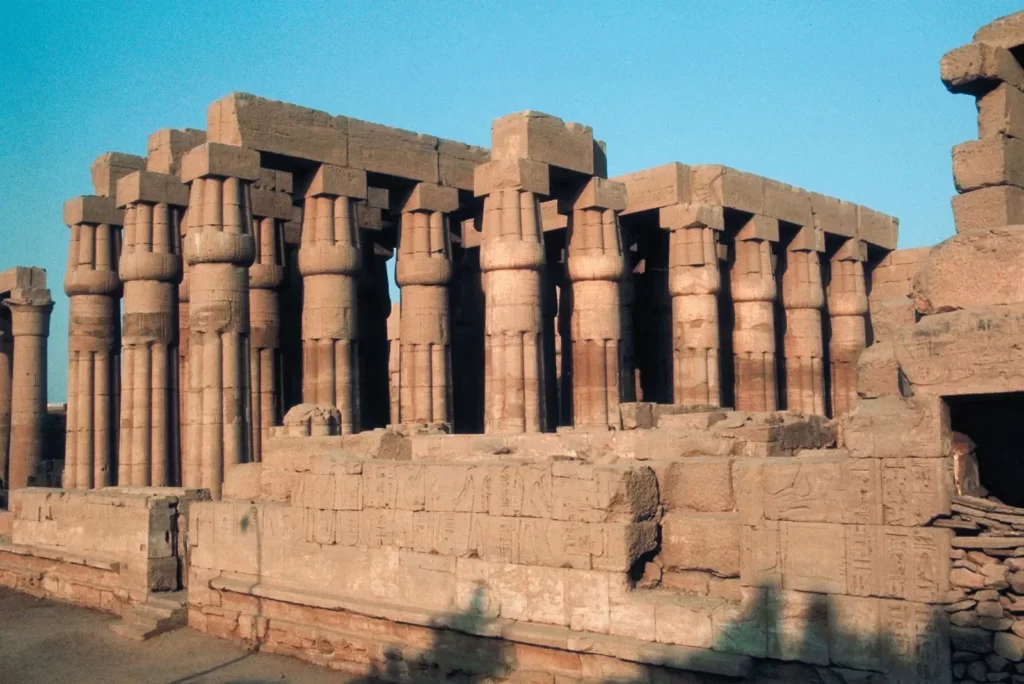
The Great Hypostyle Hall is one of the most impressive structures within Karnak Temple. This vast chamber is supported by 134 columns arranged in 16 rows, creating a breathtaking atmosphere of light and shadow. The hall was a joint project of Pharaohs Seti I and Ramses II, and it stands as a testament to their architectural genius. You can explore it during our VIP Tour
What’s interesting is that the two middle rows were taller than the others, standing at 33 feet around and 80 feet high. This hall was a bright idea from Seti I, and Ramesses II helped finish it. It’s like a giant show of how smart and creative ancient Egyptians were in making cool things.
Annual Spectacle: The Opet Festival
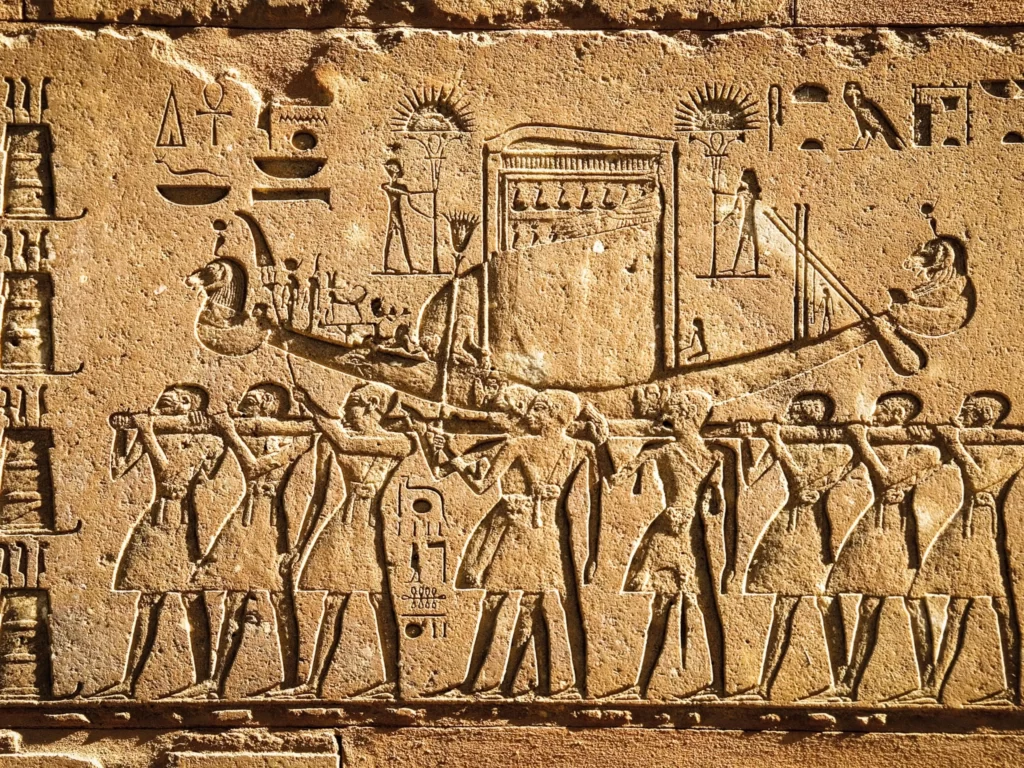
A Living Legacy
Today, the Karnak Temple remains a living legacy of ancient Egyptian civilization. A well-liked spot for tourists, drawing in millions of annual visitors. The temple’s enduring appeal lies in its ability to transport visitors back in time and connect them to the rich and complex history of ancient Egypt. As visitors explore the temple’s vast complex, they can marvel at the ingenuity and artistry of its builders, and gain a deeper appreciation for the enduring legacy of ancient Egyptian culture.
FAQ
How do annual floods affect Karnak Temple?
The floods of the Nile River happen every year, and they can be tough on Karnak Temple. These floods cause problems like erosion and damage to the base of the temple. But, people are working hard all the time to fix and make things stronger. They’re like the caretakers of Karnak, making sure it stays in good shape for everyone to see and enjoy.
Can visitors explore Karnak Temple today?
Visitors are welcome at Karnak Temple, and it’s like stepping into a time machine. You can see the incredible work of ancient Egyptians with towering columns, impressive statues, and pieces of history all around. It’s a chance to experience the grandness of a civilization that lived thousands of years ago, right in front of your eyes. Don’t forget your camera – there’s a lot of amazing stuff to capture!
What ongoing discoveries have been made at Karnak?
People who take care of Karnak are always fixing and making it stronger. While doing this, they keep finding new things like old objects and secrets from ancient Egyptian life. Archaeologists and historians are like detectives, revealing hidden treasures that help us know more about Karnak’s amazing past. So, every time they work on it, they’re discovering something special that adds to the story of this ancient temple.
Is Karnak Temple part of any UNESCO World Heritage site?
Yes, Karnak Temple, along with Luxor, the Valley of the Kings, and the Valley of the Queens, was honored by UNESCO in 1979. This means these places are officially recognized as world heritage sites, acknowledging their extraordinary cultural and historical significance. UNESCO wants to make sure they’re preserved and celebrated for people all around the world to enjoy.
Are there guided tours available at Karnak Temple?
When you visit Karnak Temple, you can take guided tours that give you a deep dive into its history, architecture, and significance. Our VIP tours are like fascinating journeys led by experts, providing a thorough exploration of this ancient marvel. It’s a great way to make your visit more engaging and educational!
Coculusion
To sum it up, Karnak Temple is like a giant treasure chest of old buildings and stories that tell us about ancient Egypt. It’s a special symbol of how these ancient people lived. Now, it’s like an open invitation for people today to come and discover the secrets of a time that’s long gone. When the sun sets by the Nile, Karnak is a reminder of how powerful and lasting this ancient civilization was, right there on the riverbanks.
